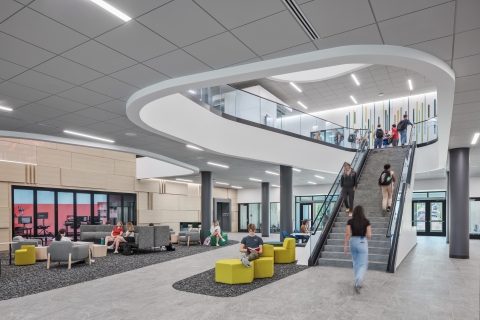
The Store Planner Mindset

Retail has always been a fast paced and dynamic industry, and that is no truer than today. I have always thought of the retail industry as one of the most creative and collaborative—just think of all the expertise required to conceptualize, plan, and open a store. To facilitate and coordinate all these disciplines, a unique consultant role was created that could take everyone’s needs and represent it all in a plan: merchandising, marketing, operations, visual, management, store design, just to name a few. The Store Planner was the liaison who understood how to marry business strategy and the retailer’s brand promise, all the while being the advocate for everyone, including the shopper.
Before the advent of internet and mass national retailing, the Store Manager had another key role, reading the pulse of their shoppers. Each store or department manager had direct and instant access to their shoppers’ needs and mindset, simply by observing and talking with them in the store. A Store Manager could glean the shopper’s current mood, answer product questions, gather information on preferred styles or products, upcoming events, or milestones. This information helped managers evaluate what merchandise should be brought into the store.
The Evolution of Store Planner and Store Manager
Together, the Store Planner and the Store Manager had a seat at the table during the design process, partnering with the in-store merchants, visual merchandisers, department managers, and the operations team. Together, they planned the store, by defining the intended customer journey, aisle circulation, department adjacencies, “shop-ability” of the merchandising systems, key locations of department displays, and the aesthetics of the materials, lighting, and furniture. Everyone had a role in insuring that the execution and construction of the new space lived up to the vision and interests of each stakeholder.
In the 1960s, as department stores followed the shoppers out of the cities and into the suburbs and regional malls were developed, these professions and the process changed. In order to meet the demands of implementing and running hundreds of stores under the guise of brand consistency, design efficiency priorities led to the development of standardize prototypes that were tested and then implemented across the country. Merchandise buying and store operations were centralized, ultimately turning the Store Manager into an operator who was no longer engaged directly with the shopper. Store Managers lost their firsthand shopper knowledge and a seat at the merchandizing table. The outside expert, the Store Planner was brought in-house, but now was relegated to merchandise fixture layouts. The store planning profession morphed into the “Retail Design Consultant,” who had limited access to shopper data.
Shift in Retail Control
Retailers once had control of location, convenience, time, quality, selection, brand offering, price, service, and store experience. They built stores in the suburbs and anchored shopping malls to offer shoppers convenient locations. When shoppers’ priorities shifted away from curated expert relationships, time and price became more important than brand loyalty, so retailers responded by developing less expensive private label products. For decades, this new model and channels worked. However, in the late 90s, outsourcing and competition with larger, more localized retailers, such as Walmart, started affecting quality and price, eating into market share and growth potential. Retailers, having gone public to generate cash, began delivering growth for the stockholders through acquisitions of the competition, losing the need for a competitive advantage incentive. When store buying and operations were centralized, the retailers lost their direct connection to each store’s shoppers. Now they use an amalgamation of shopper data to understand their in-store shoppers.
The Key to Understanding Shoppers
Today, online shopping provides shoppers with direct access anytime. There are more retailers per specialty, providing shoppers with more options. And most recently, COVID-19 issues accelerated many of these trends. Shoppers have gained control of the shopping process. The influence of the Store Manager has long since waned and the original profession of store planning no longer exists, but what they represented is needed now more than ever as the pace of change accelerates, shoppers’ fluid preferences between in-store and online broadens, and the complexity of planning and designing stores intensifies. We need to reestablish the direct connection to each store’s individual local shopper with the brand, and not just with better quantitative and predictive data. Return the Store Manager to the selling floor to understand the qualitative factors that lead to a prescriptive solution. And while the coordinating hub profession and role of store planning is no more, we need to reestablish the Store Planner’s mindset in order to solve these complex problems, by breaking down decades of siloed disciplines to create and deliver better, more enriching in-store experiences.
